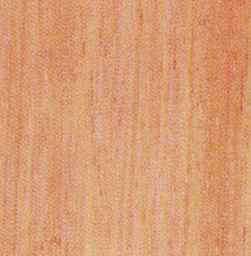
Kasai (Pometia tomentosa)
Family: Sapindaceae
Common names: Kasai, Malugai, Sibu, Taun, Truong
Distributed in: China, India, Indonesia, Malaysia, Papua New Guinea, Philippines, Sri Lanka (Oceania and S.E. Asia)
Distribution overview: Various species in the Pometia genus are widespread in Malaysia, Indochina, the Philippines, and other western Pacific islands. They are abundant in coastal areas and footils.
Common uses: Bedroom suites, Boat building, Building construction, Building materials, Cabin construction, Cabinetmaking, Canoes, Chairs, Chests, Concealed parts (Furniture), Construction, Core Stock, Decorative plywood, Decorative veneer, Desks, Dining-room furniture, Domestic flooring, Dowell pins, Dowells, Drawer sides, Factory construction, Factory flooring, Figured veneer, Fine furniture, Floor lamps, Flooring, Furniture , Furniture components, Furniture squares or stock, Hatracks, Heavy construction, Kitchen cabinets, Lifeboats, Living-room suites, Mine timbers, Office furniture, Parquet flooring, Plain veneer, Plywood, Shipbuilding, Turnery, Veneer
Environment profile: Vulnerable within its natural growth range
Tree size: Tree height is 20-30 m
Colors: the heart isRed, Reddish brownand the sapwoodWhite, Yellow.The grain isStraight, the textureMediumand the lusterLow
Natural durability: Susceptible to blue stain, Vulnerable to pinhole borer and marine borer attack
Odor: No specific smell or taste
Silica Content: Siliceous
Drying Defects: Harsh kiln-schedule may cause backsawn material to surface check and twist
Ease of Drying: Slowly
Comments: Tree produces edible fruit, leaves and bark used for medicinal purposes
Blunting Effect: Medium effect
Boring: Fairly difficult to very difficult
Carving: Fairly Difficult to Very Difficult
Cutting Resistance: Fair to excellent surfaces
Gluing: Satisfactory gluing properties
Mortising: Fairly Difficult to Very Difficult
Moulding: Fairly Difficult to Very Difficult
Movement in Service: Fairly Difficult to Very Difficult
Nailing: Good nailing properties
Planing: Very Good to Excellent
Resistance to Impregnation: Sapwood is moderately resistant
Response to hand tools: Good response
Routing recessing: Fairly Difficult to Very Difficult
Sanding: Fairly good sanding characteristics
Steam bending: Good
Screwing: Holds screws well
; Turning: Fairly Difficult to Very Difficult
Painting: Good; Polishing: Takes high polish
; Staining: Staining is easy
;
- Numerical data Metric
- Numerical data English
- Strength properties
- References
 |
 |
 |
 |
| Item |
Green |
Dry |
Metric |
| Specific Gravity |
0,54 |
0,59 |
|
| Density |
|
641 |
kg/m3 |
| Bending Strength |
621 |
957 |
kg/cm2 |
| Crushing Strength |
286 |
530 |
kg/cm2 |
| Hardness |
|
562 |
kg |
| Impact Strength |
|
|
cm |
| Shearing Strength |
|
150 |
kg/cm2 |
| Stiffness |
117 |
143 |
1000 kg/cm2 |
| Tangential Shrinkage |
7 |
|
% |
| Radial Shrinkage |
5 |
|
% |
| Weight |
624 |
512 |
kg/m3 |
| Maximum Load |
|
|
cm-kg/cm3 |
| Toughness |
|
144 |
cm-kg |
| Static Bending |
383 |
614 |
kg/cm2 |
|
 |  |  |  | | Item | Green | Dry | English | | Bending Strength | 8840 | 13622 | psi | | Density | | 40 | lbs/ft3 | | Hardness | | 1240 | lbs | | Maximum Crushing Strength | 4077 | 7546 | psi | | Shearing Strength | | 2141 | psi | | Static Bending | 5459 | 8742 | psi | | Stiffness | 1666 | 2048 | 1000 psi | | Toughness | | 125 | inch-lbs | | Specific Gravity | 0.54 | 0.59 | | | Weight | 39 | 32. | lbs/ft3 | | Radial Shrinkage | 5 | | % | | Tangential Shrinkage | 7 | | % | | Volumetric Shrinkage | 13 | | % | |
Resists denting and marring
Heavy
Hardness (side grain) = medium
Density = high
Compression strength (parallel to grain) = high
Bending strength (MOR) = high
Bolza, E., Kloot, N. H. 1966. The Mechanical Properties of 81 New Guinea Timbers. Technological Paper No. 41. Division of Forest Products, Center for Scientific and Industrial Organization (CSIRO, Melbourne, AustraliaEddowes, P.J. 1977. Commercial Timbers of Papua New Guinea - Their Properties and Uses. Forest Products Research Center, Office of Forests, Department of Primary Industry, Papua New Guinea.Keating, W.G., Bolza, E.,1982,Characteristics properties and uses of timbers. South East Asia, Northern,Australia and the Pacific,C.S.I.R.O. Div. Chemical Technology,Inkata Press,1WCMC. 1992. Conservation Status Listing - Trees and Timbers of the World. World Conservation Monitoring Center-Plants Programme, Cambridge, CB3 ODL, United Kingdom.
|








